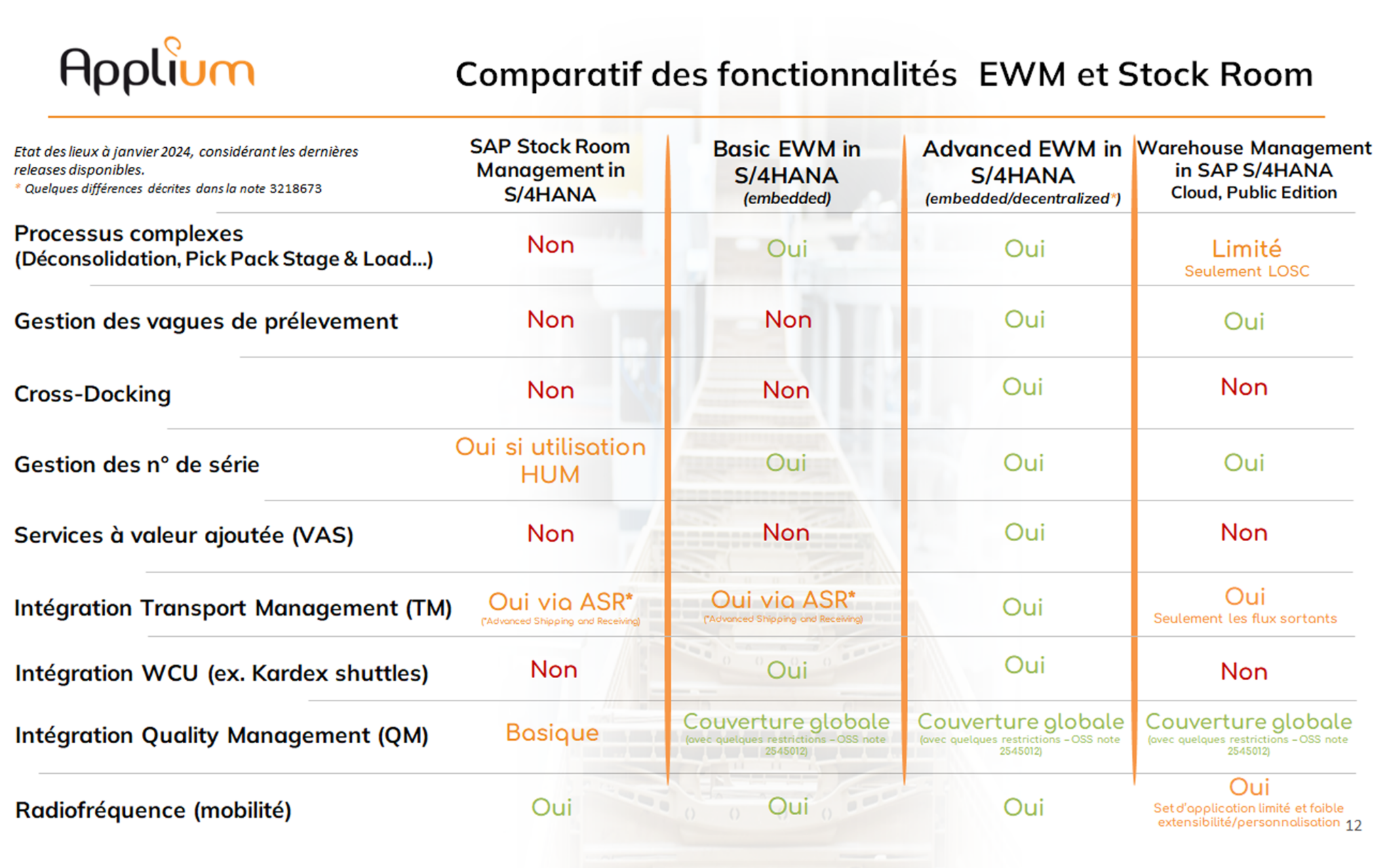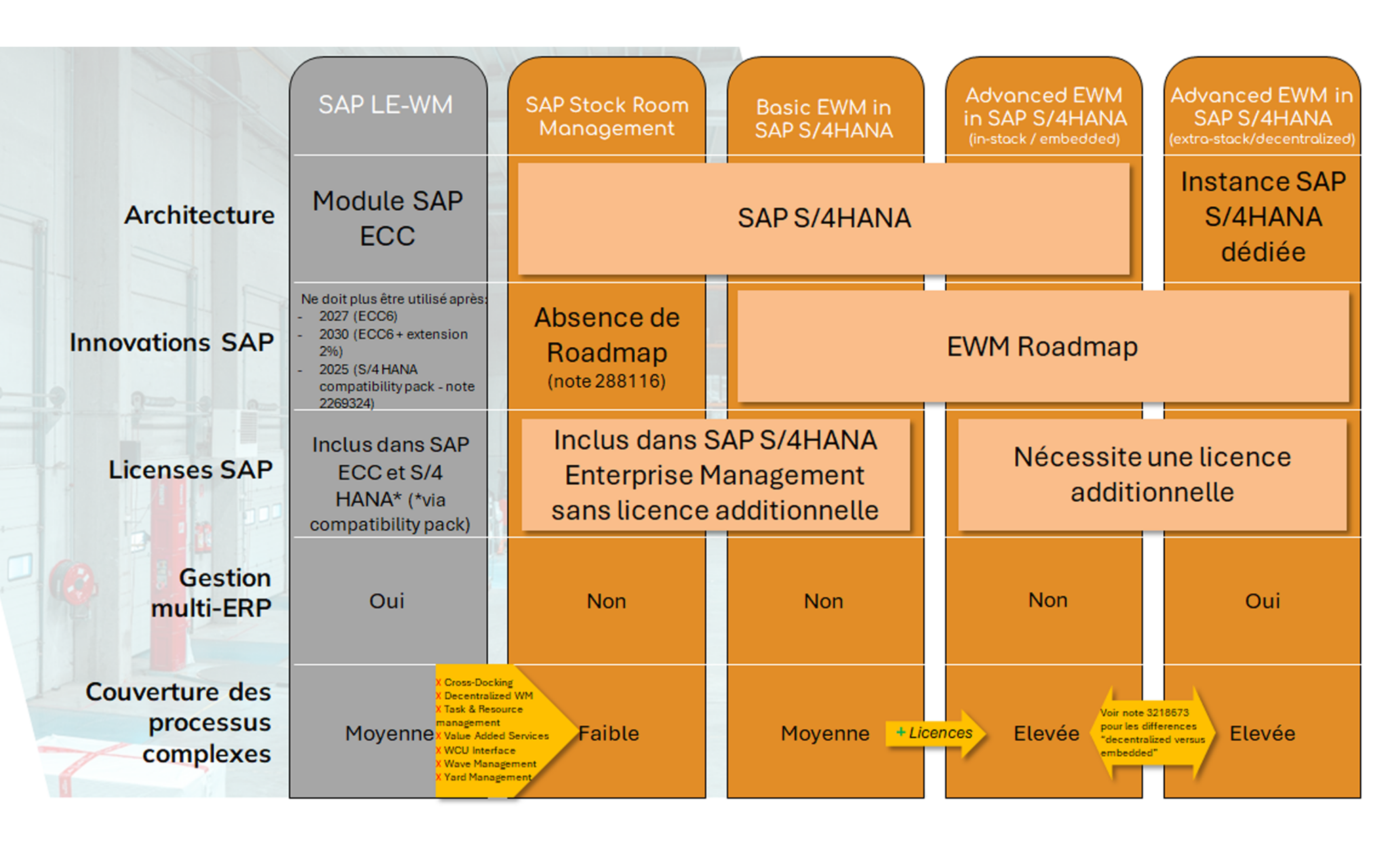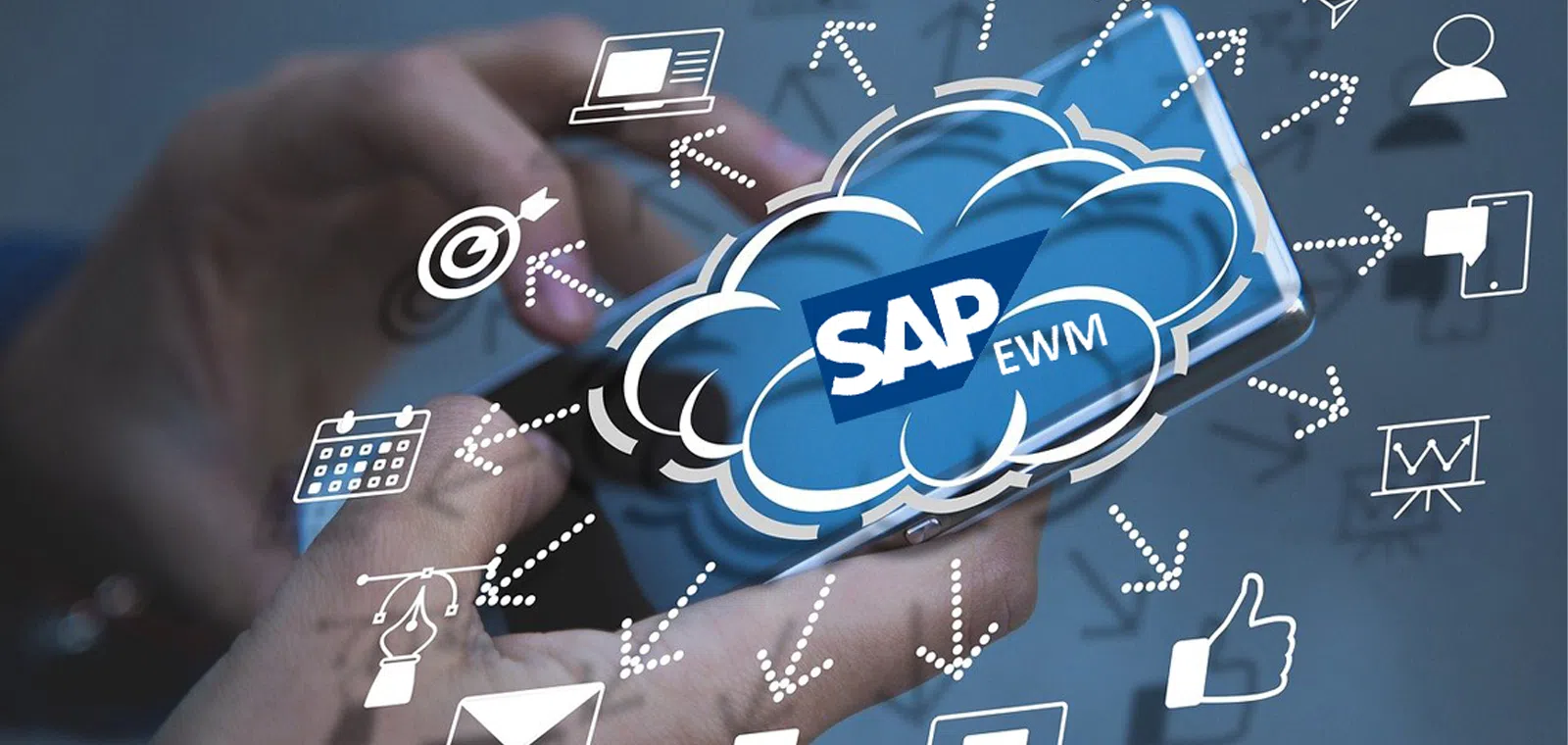SAP EWM, what is it?
What is SAP EWM ?
SAP EWM (Extended Warehouse Management) is an advanced warehouse management solution (WMS) available with SAP S/4HANA and SAP ECC6 (in its decentralized version). The SAP EWM solution significantly optimizes logistics operations, improves inventory accuracy and boosts warehouse productivity. Thanks to its real-time visibility and flexible functionalities, SAP EWM efficiently manages inventories, from receipt to production line supply, right through to dispatch.
What are the SAP EWM functionalities ?
- Storage strategy and storage optimization
- Picking strategy and service rate improvement
- Real-time inventory visibility
- Supervision of storage and picking activities in real time (KPI)
- Digitalization of warehousing processes (mobile applications)
- Real-time production supply
- Process automation (replenishment, reordering, scanners and barcodes)
- Integration with automated systems (automated warehouses, Kardex towers, Hänel towers, etc.)
- Cross-docking
- Dock management
- TM (Transport Management) integration
And much, much more…
What does the future hold for SAP WM ?
The end of vendor maintenance on ECC6 is fast approaching (2027 or 2030 on option), and the historic warehouse management module (WM) is also tending to disappear in these same horizons.
With the advent of SAP S/4HANA, SAP is encouraging its customers to migrate to SAP EWM to benefit from advanced functionalities and seamless integration with the SAP suite.
Although SAP WM can still be used on SAP S/4HANA until 2025 (OSS note 2269324), customers will have to decide whether to switch their warehouse management to SAP EWM or SAP Stock Room Management.
SAP Stock Room Management, which can be likened to a simplified, “upgraded” version of WM, is the most direct heir to WM, given its very similar technical architecture. But you’ll have to be careful with the reduced functionality offered by this first WMS alternative proposed by SAP (see note OSS 2577428).
As part of a transition to S/4HANA, the deployment of SAP EWM makes more sense, thanks to its broader functional coverage, and because the absence of a roadmap for SAP Stock Room Management offers less attractive long-term prospects (see OSS note 288116).
What are the different versions of SAP EWM ?
Le déploiement de EWM peut se faire :
- Dans sa version directement intégrée à l’ERP S/4HANA (Embedded / in-stack): qui favorise la gestion globale des données autour d’un seul système. Deux déclinaisons de versions sont proposées : “Basic EWM” (inclus dans les licences S/4HANA On premise ou Private Cloud) ou “Advanced EWM” (avec coût de licence additionnelle)
- Dans sa version décentralisée (Decentralized / extra-stack): qui sera alors une solution autonome interfacée avec un ERP SAP ou autre. Cette version offre les fonctionnalités avancées de EWM.
Avantages de SAP EWM “Embedded” :
- Réduction de la réplication des données : Les données des partenaires commerciaux, des articles et des lots n’ont pas besoin d’être répliquées, elles sont directement accessibles depuis SAP S/4HANA ERP.
- Suppression de l’interface centrale (CIF) : L’interface centrale n’est pas nécessaire, simplifiant ainsi le système.
- Accès direct aux données de transaction : les documents de livraisons (entrantes ou sortantes), de production sont accessibles directement.
- Élimination des documents supplémentaires : Réduction des documents nécessaires, simplifiant les processus.
- Système intégré : SAP S/4HANA ERP et EWM fonctionnent sur le même système, simplifiant la structure globale.
- Réduction des coûts : La licence de base d’EWM est incluse dans SAP S/4HANA ERP.
Avantages de SAP S/4HANA EWM “Decentralized” :
- Gestion de grands volumes de transactions : Conçu pour traiter de grandes quantités de données et transactions.
- Résilience du système ERP : L’ERP reste fonctionnel même en cas de dysfonctionnement.
- Gestion multi-entrepôts : Capacité de gérer plusieurs entrepôts dans un même système.
- Mises à niveau indépendantes : Les deux systèmes ERP peuvent être mis à jour indépendamment.
- Interconnexions multiples : Capacité d’interconnexion avec plusieurs systèmes ERP.
What are the good reasons to deploy EWM?
Power and scalability
EWM is a powerful and scalable WMS. Implementing EWM will make a major contribution to increasing operational excellence in your warehouses.
Native integration and tool rationalization:
Take advantage of native integration between your SAP ERP and EWM, and streamline your tools.
Prospects for innovation:
WM and SAP Stock Room Management are based on an aging architecture/technology with little or no scope for innovation, and with a consulting offering that is becoming increasingly rare.
A single license is all you need:
Basic EWM requires no additional license. As your business evolves, advanced features can be easily deployed.
Overall, EWM offers a wider range of functions than Stock Room, whether in its Basic or Advanced version.
Keys to a successful EWM implementation project include
Define project objectives
- Best practice?
- Greenfield ?
- Brownfield ?
- Rapid deployment?
- Operational efficiency?
- What planning?
- What scope?
Map your processes
- Define and describe critical processes.
- Map and detail target processes.
Train and involve your Process Owners and/or Key Users
- Prior to the explore/blueprint phase, it may be a good idea to train BPOs/KUs in the rudiments of EWM.
- Don’t wait for the UAT before taking ownership of the solution.
- Get involved in defining the solution.
Maximize the standard and think ” simple “
- Identify ” must-have ” and ” nice to have “.
- Standardize upstream and downstream processes.
- Don’t make processes unnecessarily complex (e.g. excessive traceability or multiple sampling processes). “Less is more”.
- Beware of the fixation effect.
Control your scope
- Set a pragmatic course, with a roadmap and structured batches.
- Clearly segment your scope.
- Establish a clear, precise project plan.
Optimize collaboration and communication
- Implement collaborative tools that bring value to your teams and your integrator.
- Encourage exchanges/interactions between stakeholders (integrator and customer, but also internally).
Don’t overlook the importance of change management
- To help you demystify obscure or overly technical concepts.
- To train you.
- To structure your needs.
- To assist you in your critical projects (recipe planning, migration, cutover, etc.).



